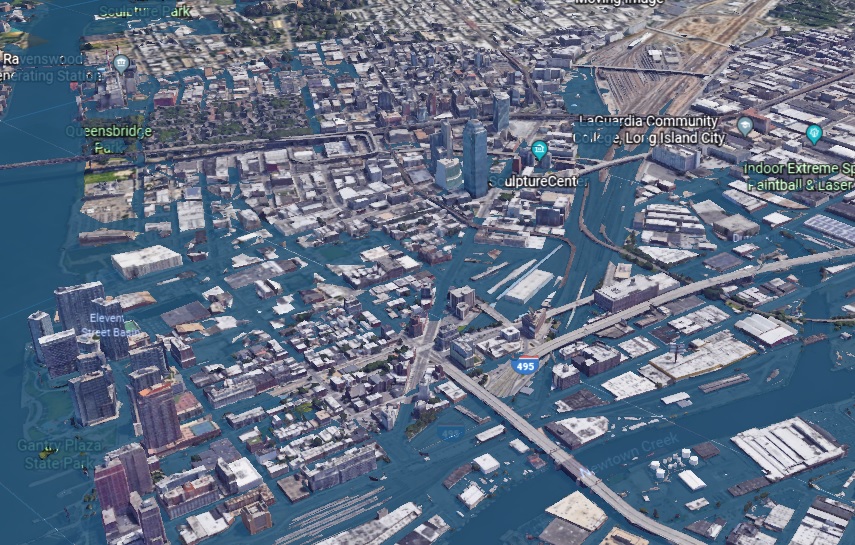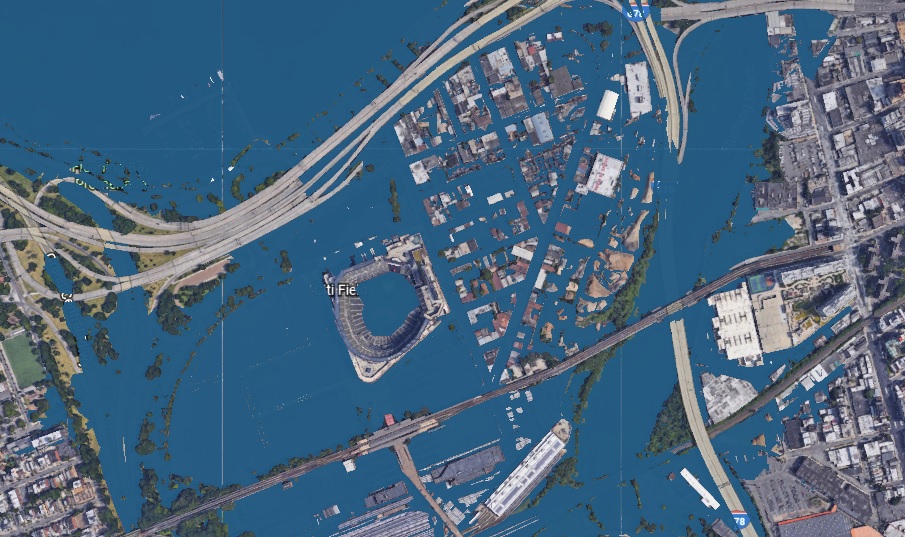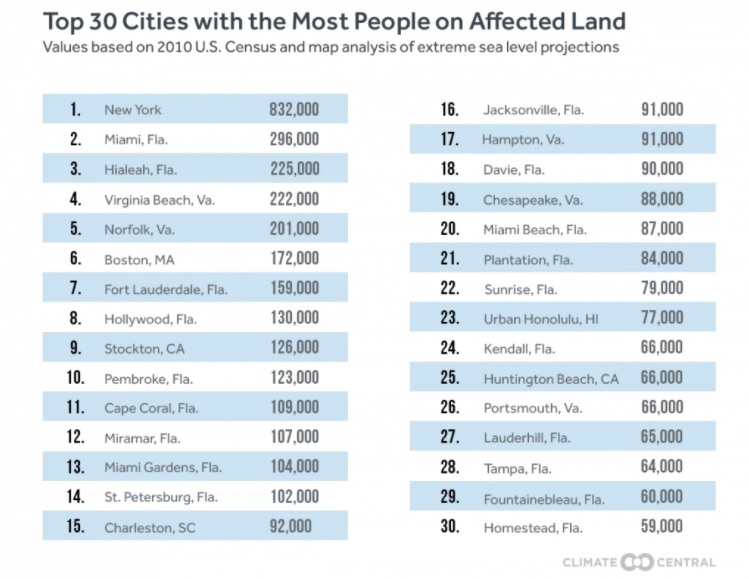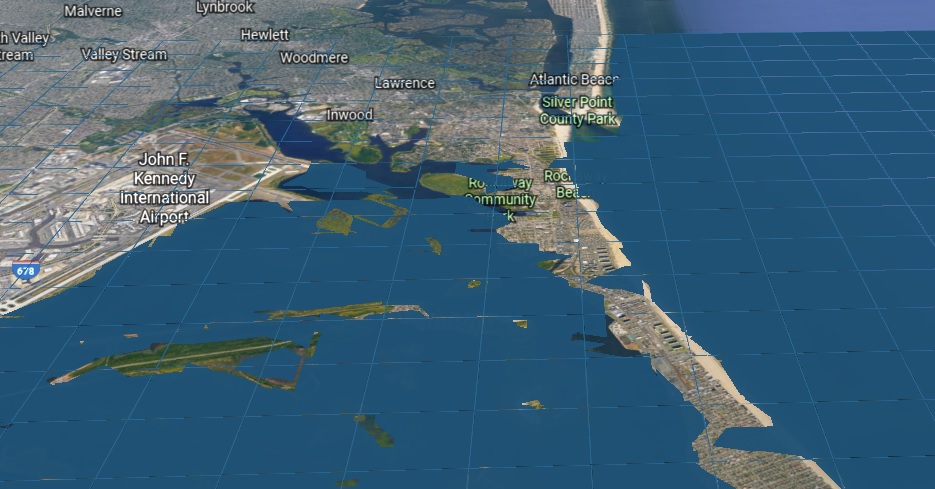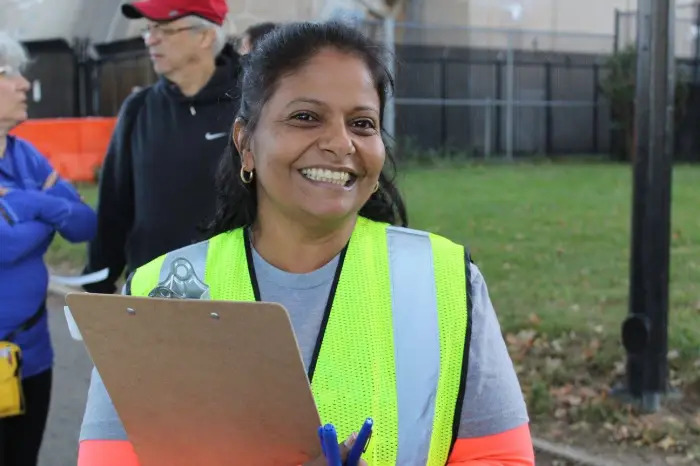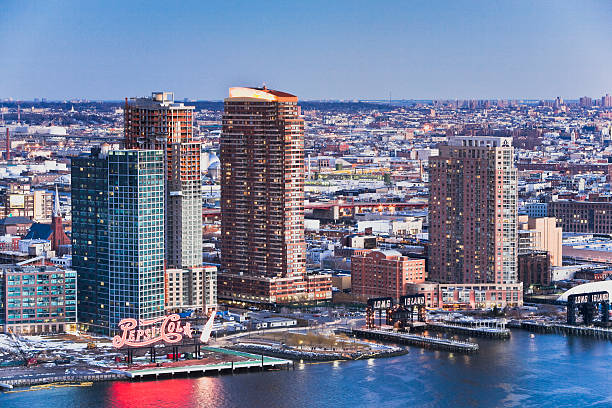A new Google Earth plugin allows users to explore how rising sea levels would affect their neighborhoods and the tool shows that large swaths of Queens would be completely flooded.
Surging Seas:Extreme Scenario 2100 was created by Climate Central, an organization of scientists and journalists who report on the impact of climate change. The plugin uses data from a report by the National and Oceanic Atmospheric Administration (NOAA), which estimates that sea levels across the United States could rise by eight feet by 2100.
The organization also predicts that an extreme sea level scenario may cause sea levels to rise by 10 to 12 feet in some cases if the country does not transition to clean energy alternatives.
The map shows that large swaths of Long Island City would be submerged in water including landmarks such as Gantry Plaza State Park.
JFK and LaGuardia Airports would also be flooded along with Flushing Meadows Corona Park and sections of north Astoria, College Point, Flushing and most of the the Rockaways.
Climate Central also found that New York would be the second most affected state if this extreme sea level rise were to occur. An average high tide would be two feet higher than Hurricane Sandy’s flood level and would affect an area currently inhabited by more than 800,000 residents.
Mayor Bill de Blasio has outlined a plan to reduce greenhouse gas emissions 80 percent by 2050 in a report titled OneNYC. To complete this goal, the city has phased out the use of number 6 fuel oil and nearly 6,000 buildings city wide have converted to using cleaner fuels for heat.
In terms of transportation, the city has purchased hundreds of electric vehicles since 2015 with the goal of amassing a fleet of 2,000 electric vehicles by 2025. The Department of Transportation has also installed many miles of bike lanes citywide to encourage residents to use alternative forms of transportation. A city report found that bicycle trips increased in 2016 by 150 percent, or by 98 million from 2006.
The Department of Sanitation expanded its curbside collection program to more than 700,000 New Yorkers to divert organic waste from landfills and the mayor is looking to require landlords to retrofit older, larger buildings to make them more energy efficient.
New York City and other coastal cities around the country are taking steps to curb greenhouse gases and become more energy efficient to try to combat the projected affects.
A city report estimates that the mean annual temperature is projected to increase between 4.1 and 6.6 degrees Fahrenheit by 2050 and that the sea level is expected to continue rising by 11 to 21 inches by 2050.
To download the plugin, follow the instructions below:

